| Environmental Engineering Research Lab | |
| 1. Atomic Absorption Spectrophotometer | |
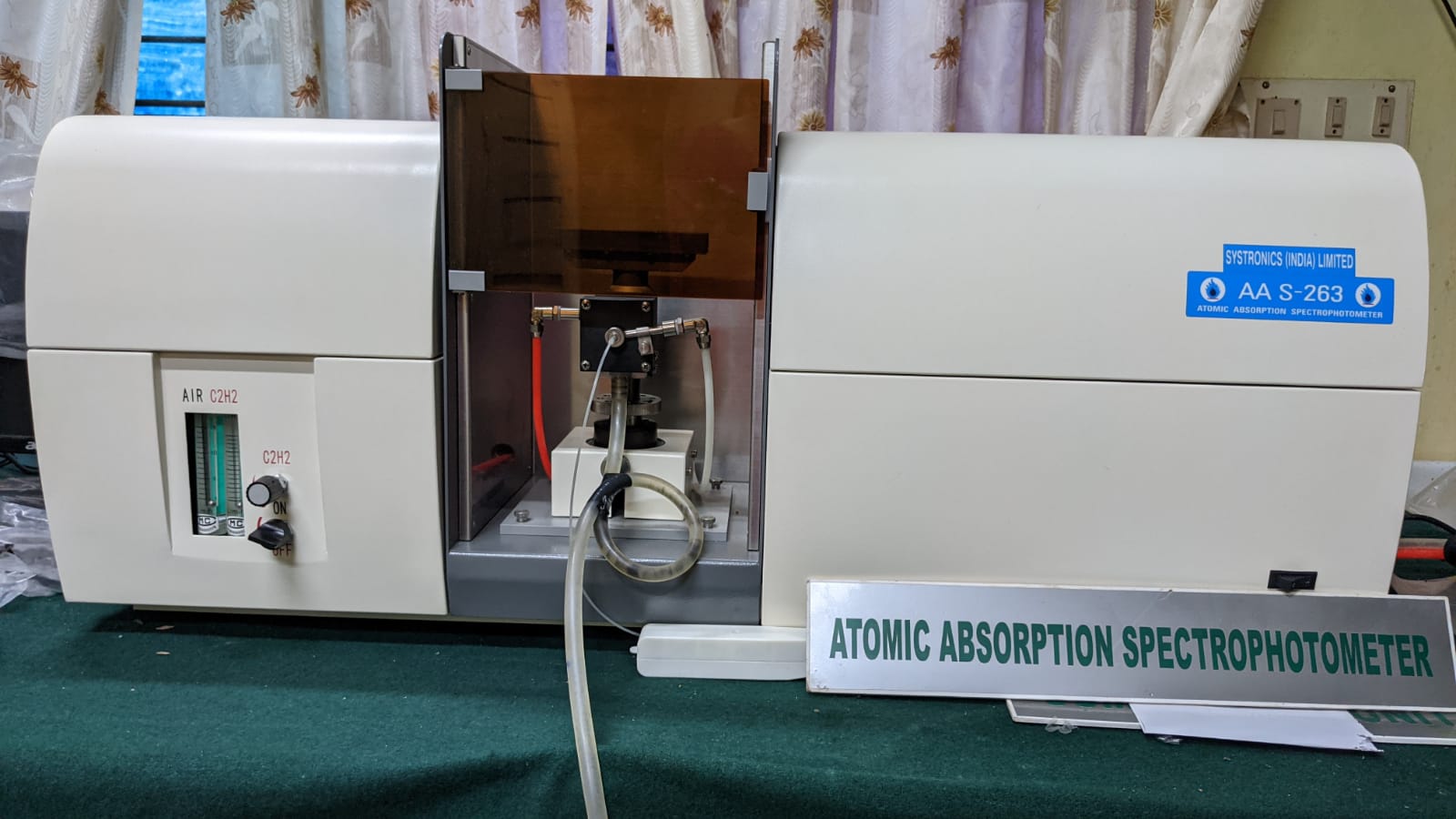 | |
| Make : Systronics(India) Limited | |
| Application : To analyse heavy metals from water samples | |
| Standard Features:
Wavelength range -190 nm – 900nm Grating density – 1800(Czerny – Turner) Spectral bandwidth – 0.2,0.4,1.0 & 2.0 nm Automatic switching Wavelength accuracy – ± 0.25nm Wavelength repeatability – 0.05nm Light Source System Lamp holder – Six position, automatic switching Power supply mode – 400Hz pulse Lamp current range – 0 -10 mA Atomization System Characteristic – 0.025 μg/ml/1% concentration Cu Burner – 100 mm Titanium material Precision degree -RSD ≤ 1% Atomizer – The metal sleeve, glass atomizer Atomization system – Acid and corrosion resistance | |
| Unique Features and Advantages :Heavy metal analysis | |
| 2. Micro controller based UV VIS Spectrophotometer | |
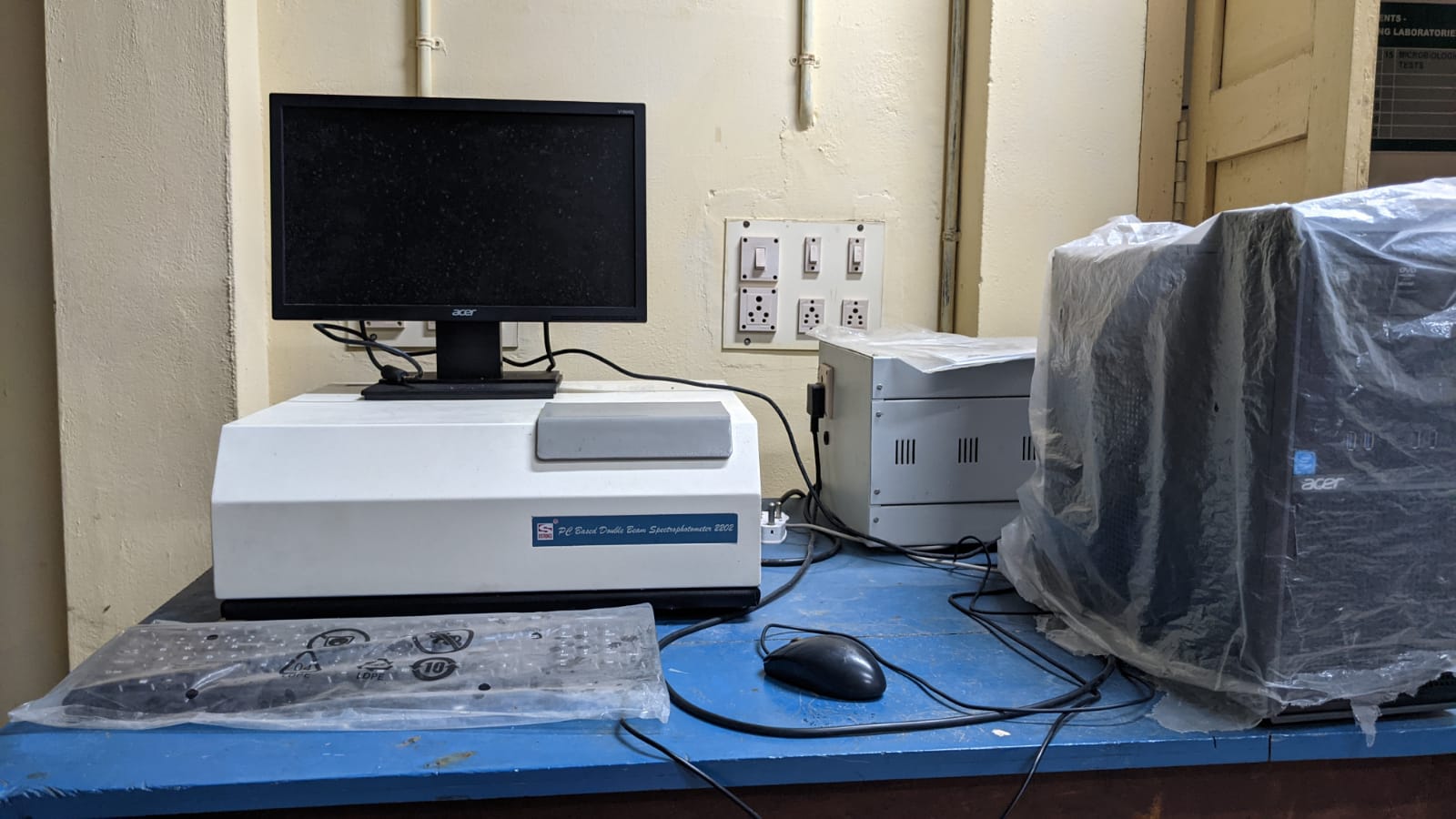 | |
| Make : Systronics(India) Limited | |
| Application : Analysis of water samples | |
| Standard Features:
Wavelength Range 200-1100 nm Optical System Double Beam Spectral Bandwidth 2 nm Machine Type Portable Application Laboratory Use Brand Systronics Model No / Item Code 2202 Wavelength Accuracy +- 0.5 nm Wavelength Repeatability +- 0.2 nm Photometric Accuracy +-0.005 Abs Photometric Range -2.5-2.5 Abs Photometric Repeatability +-0.002 Abs Stray Light Less than equal to 0.05%T Detector Silicon Photodiode Lamp Type Tungsten Halogen Lamp, Deuterium Lamp Dimensions 520*500*190 mm Baseline Flatness +-0.003 Abs Grating 1200 lines / mm Voltage 230 V Frequency 50 Hz Weight 23 kg | |
|
Unique Features and Advantages :Features:
PC Based Double Beam Automatic source optimisation, Base line calibration & Cell optimisation %T, Abs, Conc. (K factor, Multi standard), Multi component measuring modes Single Wavelength, Multi Wavelength, Scan (with multi scan facility), Time Scan, Kinetic scan operating modes Automatic 5 position sample changer | |
| 3. Phosphate Analyser | |
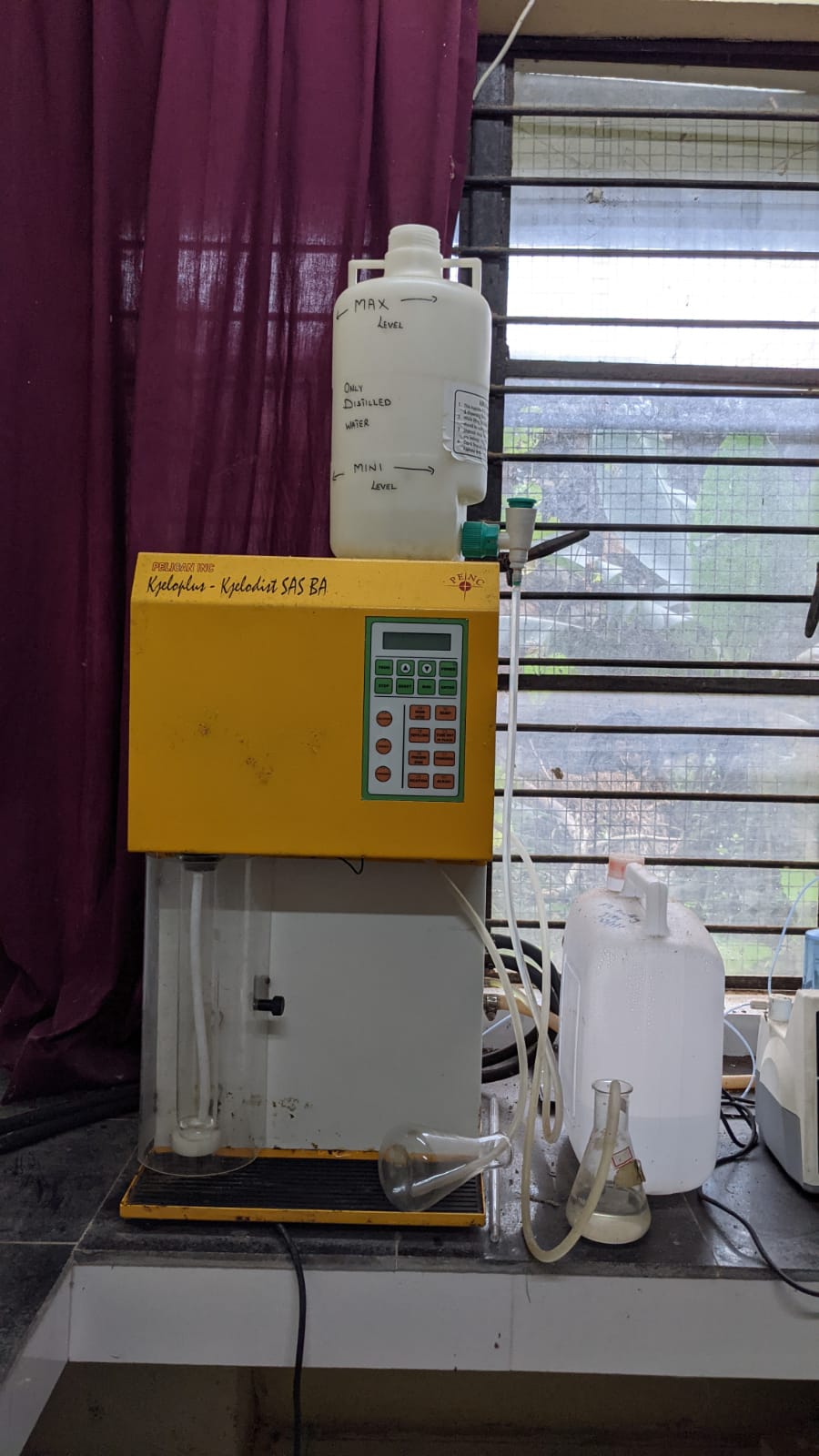 | |
| Make : DTLI DATALINK INSTRUMENTS | |
| Application : To analyse phosphate from water samples | |
| Standard Features:
Colorimetric method for detecting very low concentrations Automated cleaning system and zero adjustment. Automatic calibration from a standard. Functional measurement of dirty water The technology at several wavelengths allows the measurement of the dirty water without filtration. Large section hoses limit risk of clogging. | |
| Microbiology Lab | |
| 1. Vertical Autoclave | |
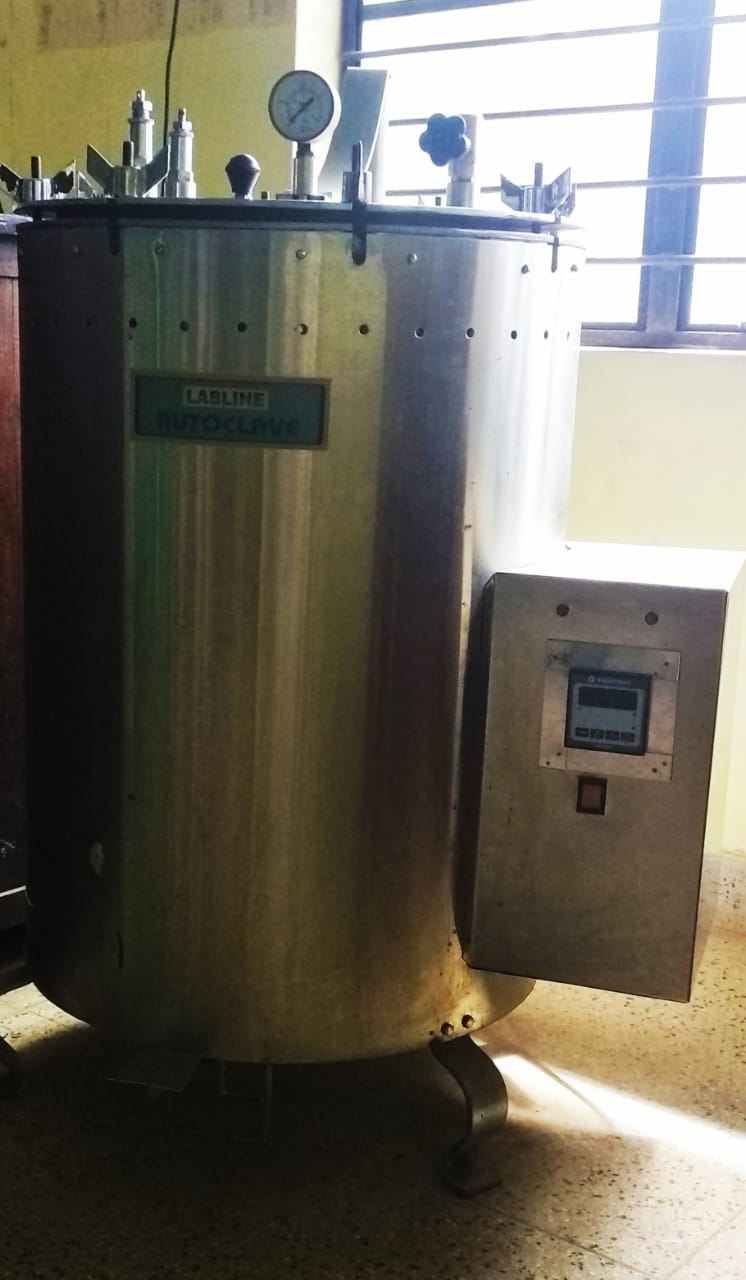 | |
| Make : Labline | |
| Application :An autoclave is a machine used to carry out industrial and scientific processes requiring elevated temperature and pressure in relation to ambient pressure/temperature. | |
| Standard Features:
Autoclaves are used to sterilize equipment and supplies by subjecting them to pressurized saturated steam at 121 °C (250 °F) for around 15–20 minutes depending on the size of the load and the contents.
| |
| Unique Features and Advantages :Autoclaves are used in medical applications to perform sterilization and in the chemical industry to cure coatings and vulcanize rubber and for hydrothermal synthesis. Industrial autoclaves are used in industrial applications, especially in the manufacturing of composites. | |
| 2. Biological safety cabinet-Class II | |
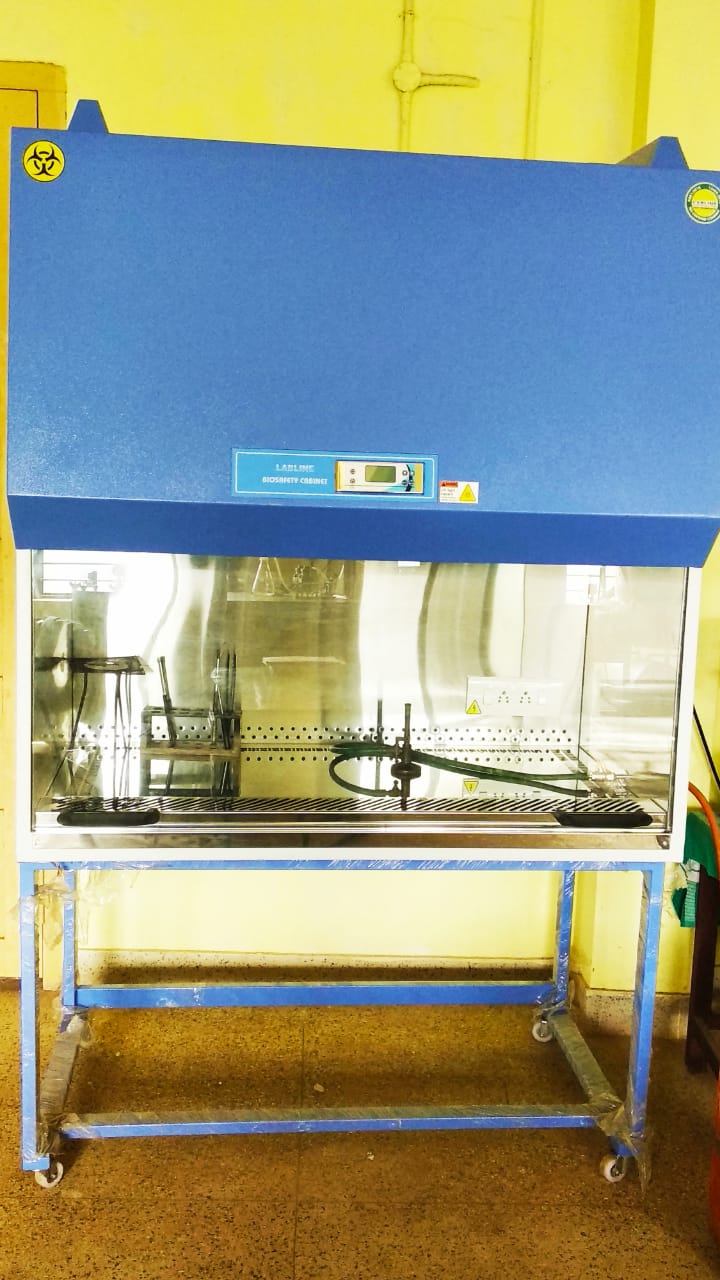 | |
| Make : Labline | |
| Application :A biosafety cabinet (BSC)—also called a biological safety cabinet or microbiological safety cabinet—is an enclosed, ventilated laboratory workspace for safely working with materials contaminated with (or potentially contaminated with) pathogens requiring a defined biosafety level | |
| Standard Features:
The primary purpose of a BSC is to serve as a means to protect the laboratory worker and the surrounding environment from pathogens. All exhaust air is HEPA-filtered as it exits the biosafety cabinet, removing harmful bacteria and viruses.
| |
| Unique Features and Advantages :Class II cabinets provide both kinds of protection (of the samples and of the environment) since makeup air is also HEPA-filtered. | |
>
| P G Hydraulics lab | |
| 1.Reynolds apparatus | |
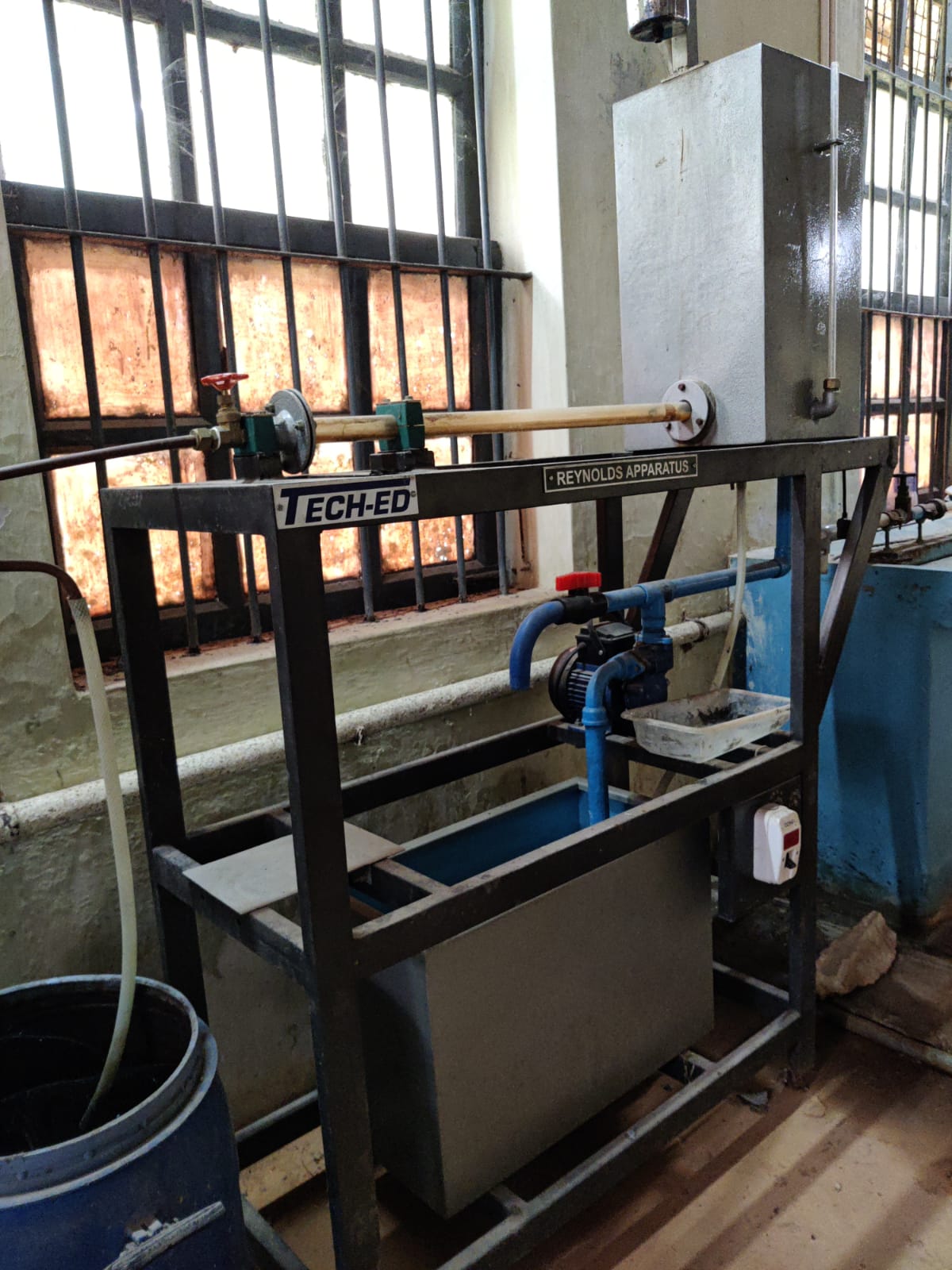 | |
| Make : TECH ED | |
| Application : to illustrate laminar, transitional, and fully turbulent flows in a pipe, and to determine under which conditions each flow regime occurs. | |
| 2. Hydrology apparatus | |
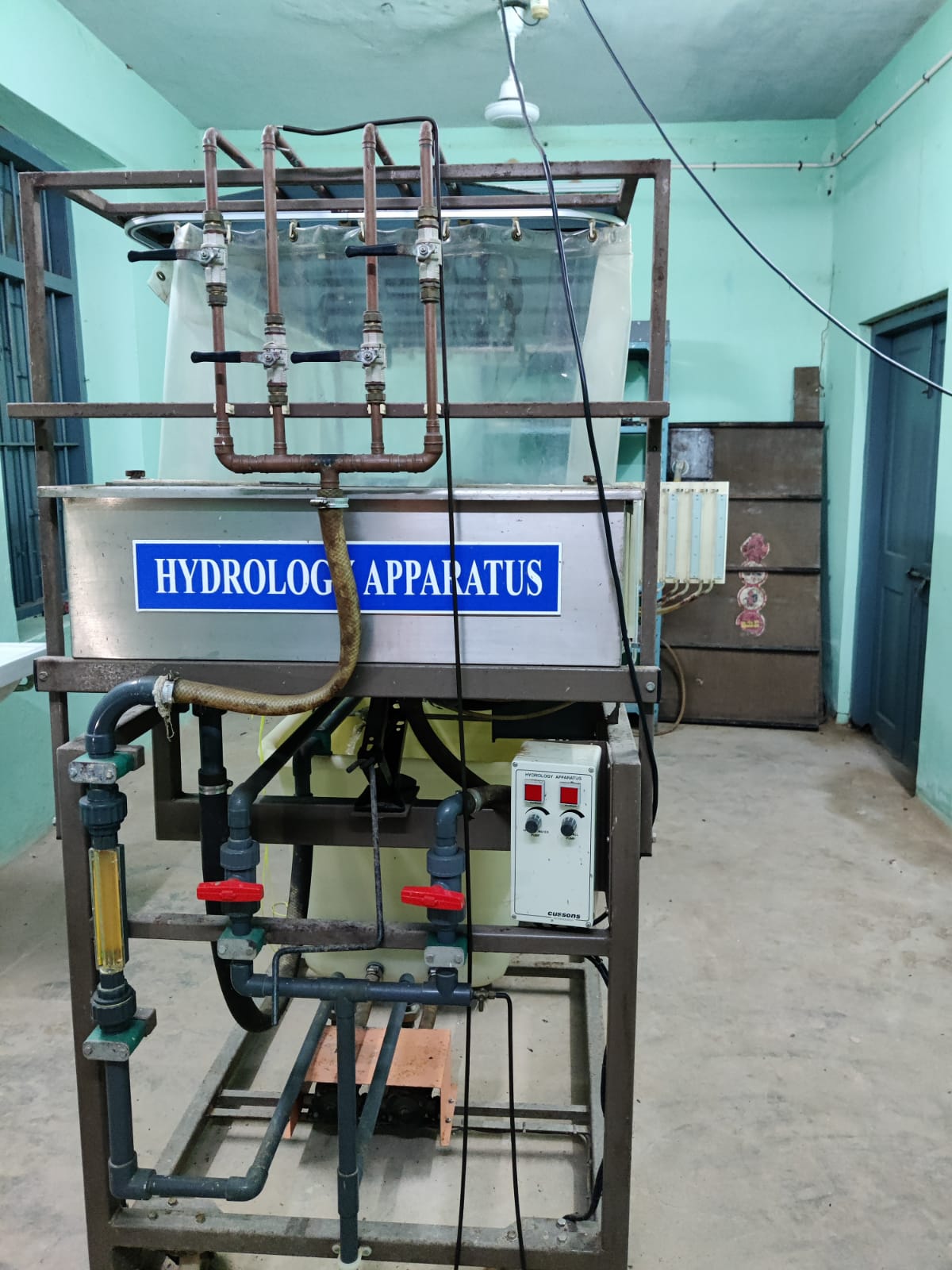 | |
| Make : TECH ED | |
| Application :For comprehensive study of hydrology. Simulates rain and moving storms over a permeable medium. Includes an inclinable catchment area with central tappings to measure water table profile. Ideal for group study. | |
| 3. Acoustic Doppler velocimeter | |
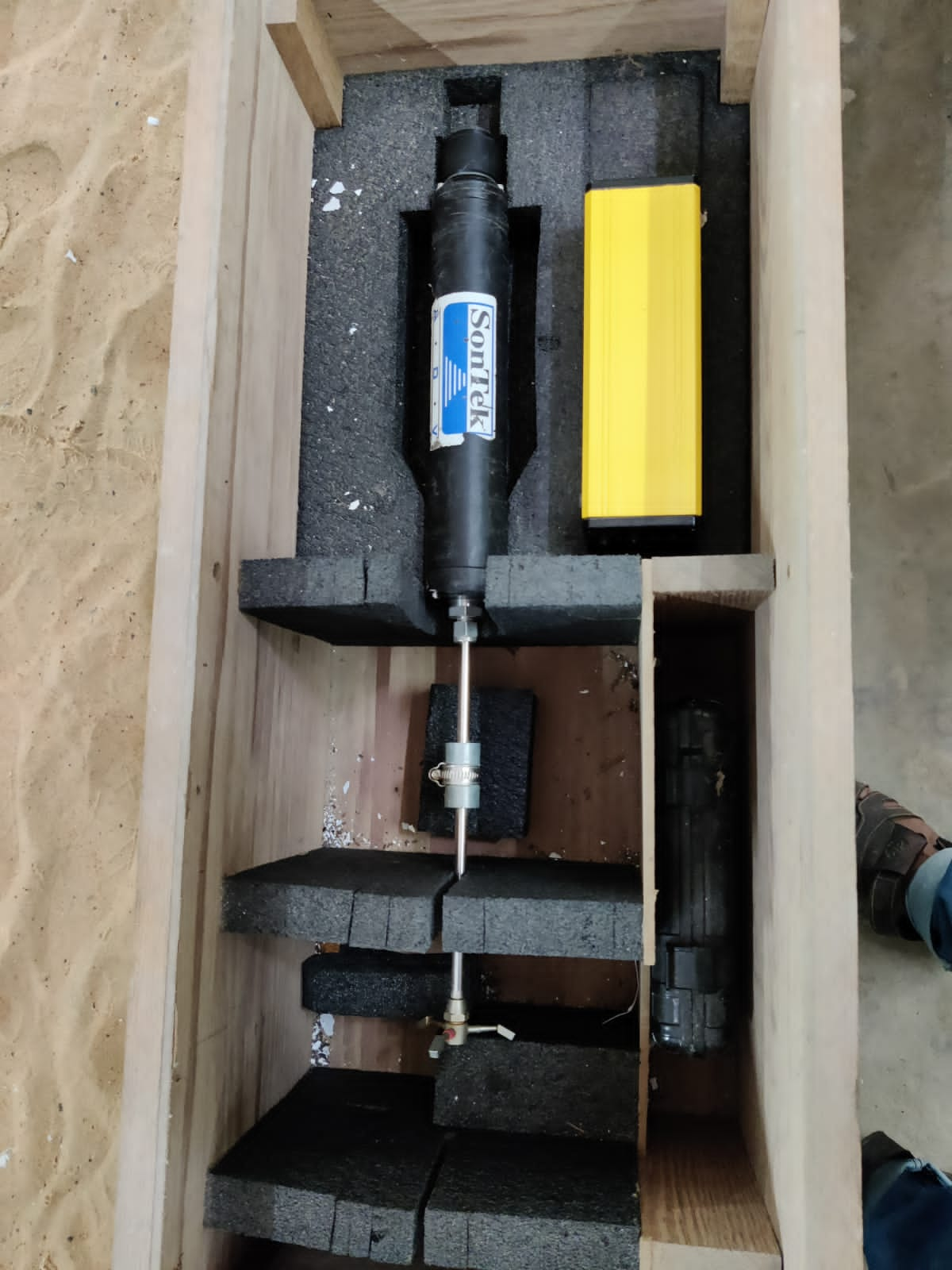 | |
| Make : Sontek | |
| Application To record instantaneous velocity components at a single-point with a relatively high frequency. Measurements are performed by measuring the velocity of particles in a remote sampling volume based upon the Doppler shift effect. | |
| 4. Waterlevel sensor | |
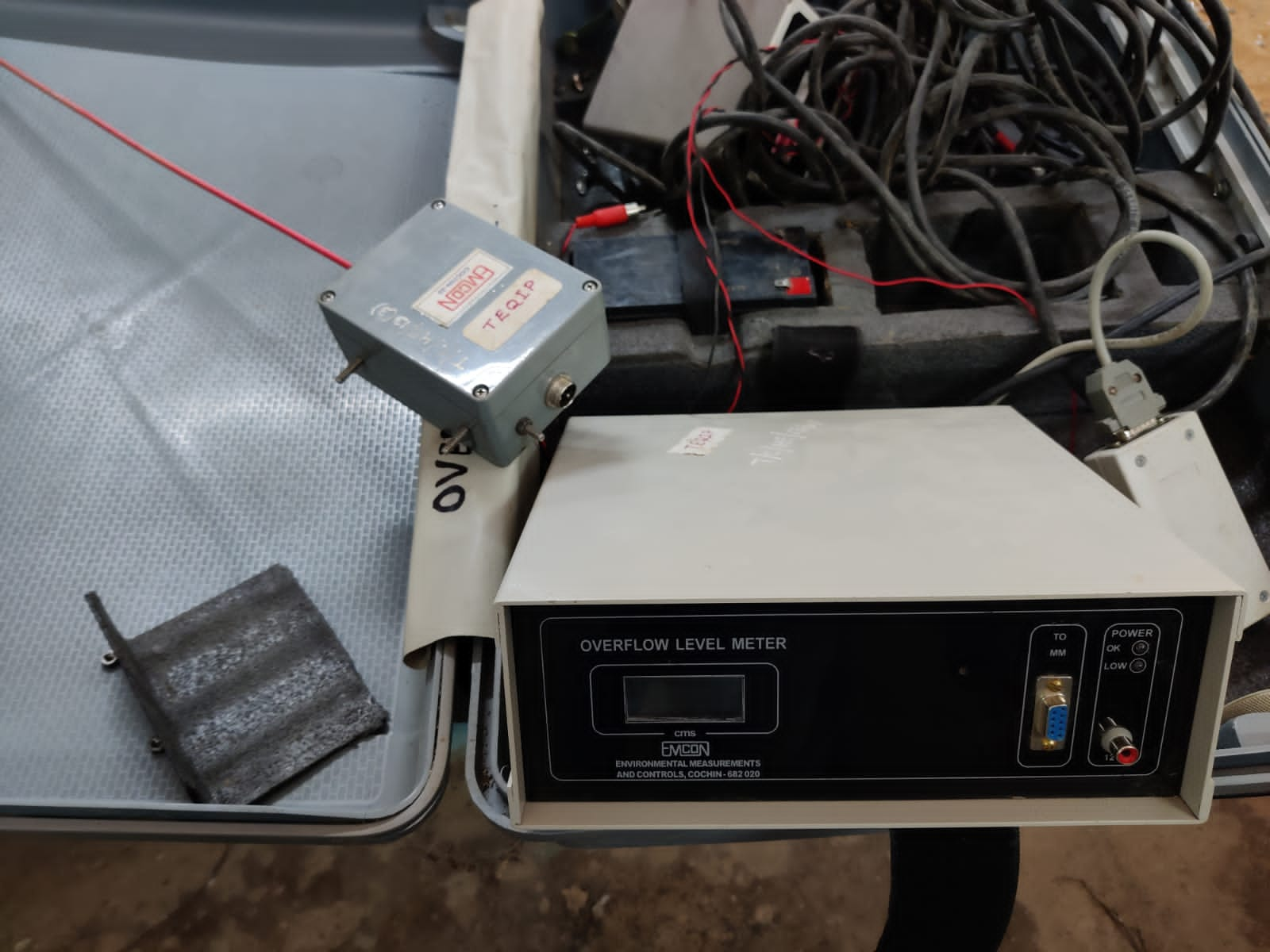 | |
| Make : Emcon | |
| Application to detect the level of substances that can flow. Such substances include liquids, fluid etc.Level measurements can be done inside containers or it can be the level of a river or lake. | |
| 5. Infiltrometer | |
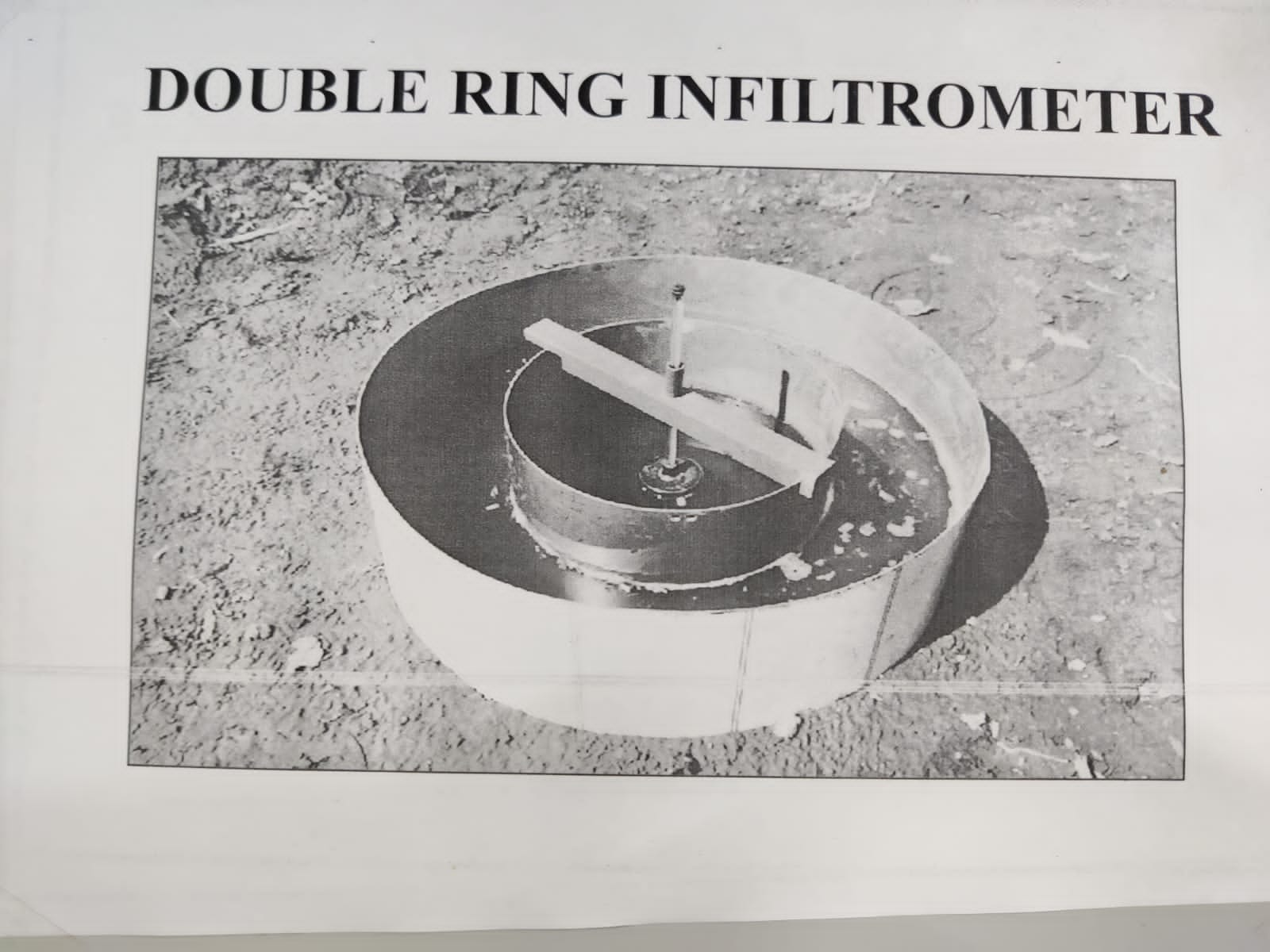 | |
| Make :Local | |
| Application To measure the infiltration rate of souls in the field | |
| 6.Weighing balance | |
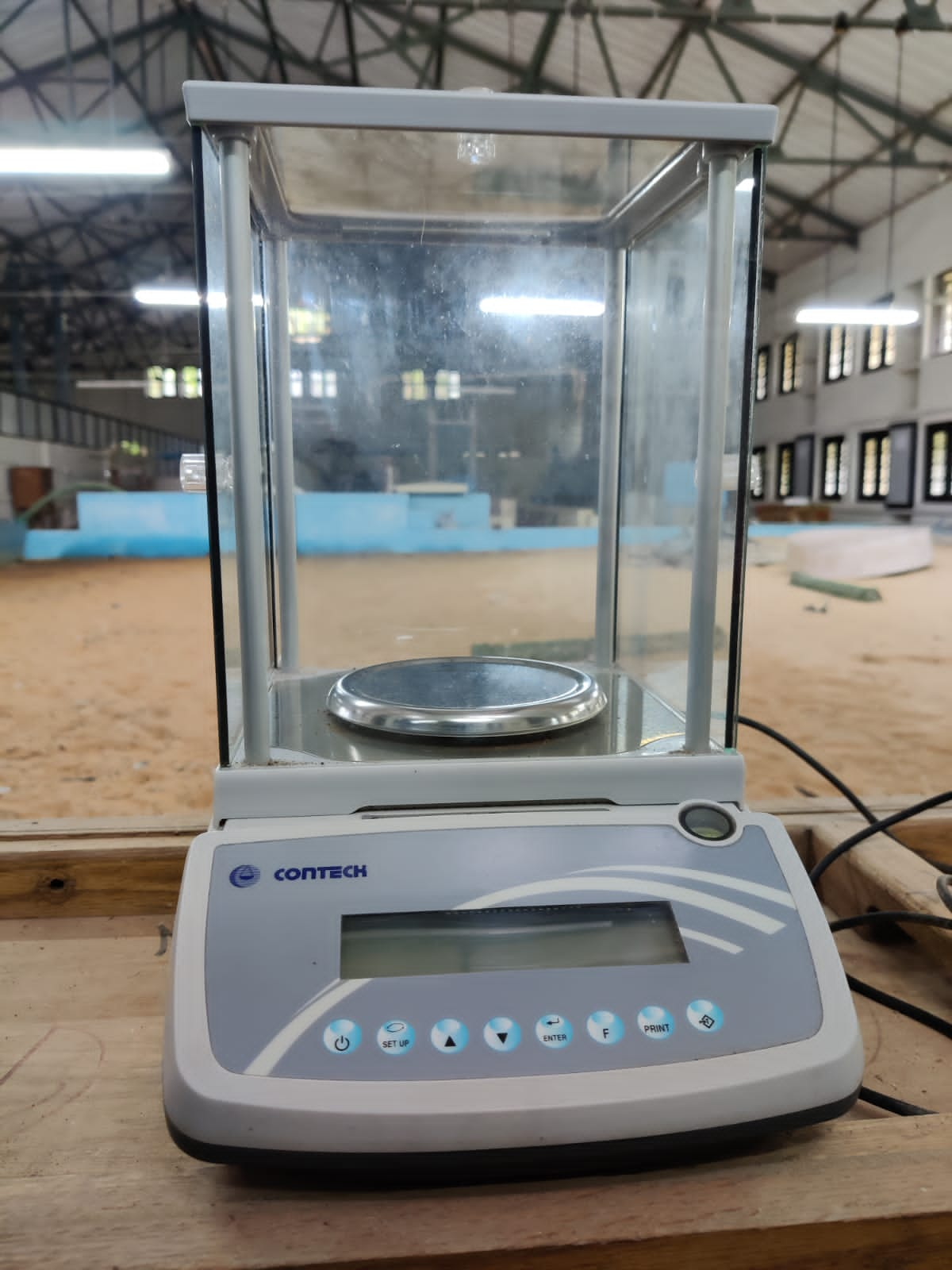 | |
| Make :Contech | |
| Standard Features Max capacity 1kg accuracy 0.001g | |
| Unique Features Can measure weight with an accuracy of 0.001g | |
| Concrete Laboratory | |
| 1. Rapid Chloride Permeability Test (RCPT) | |
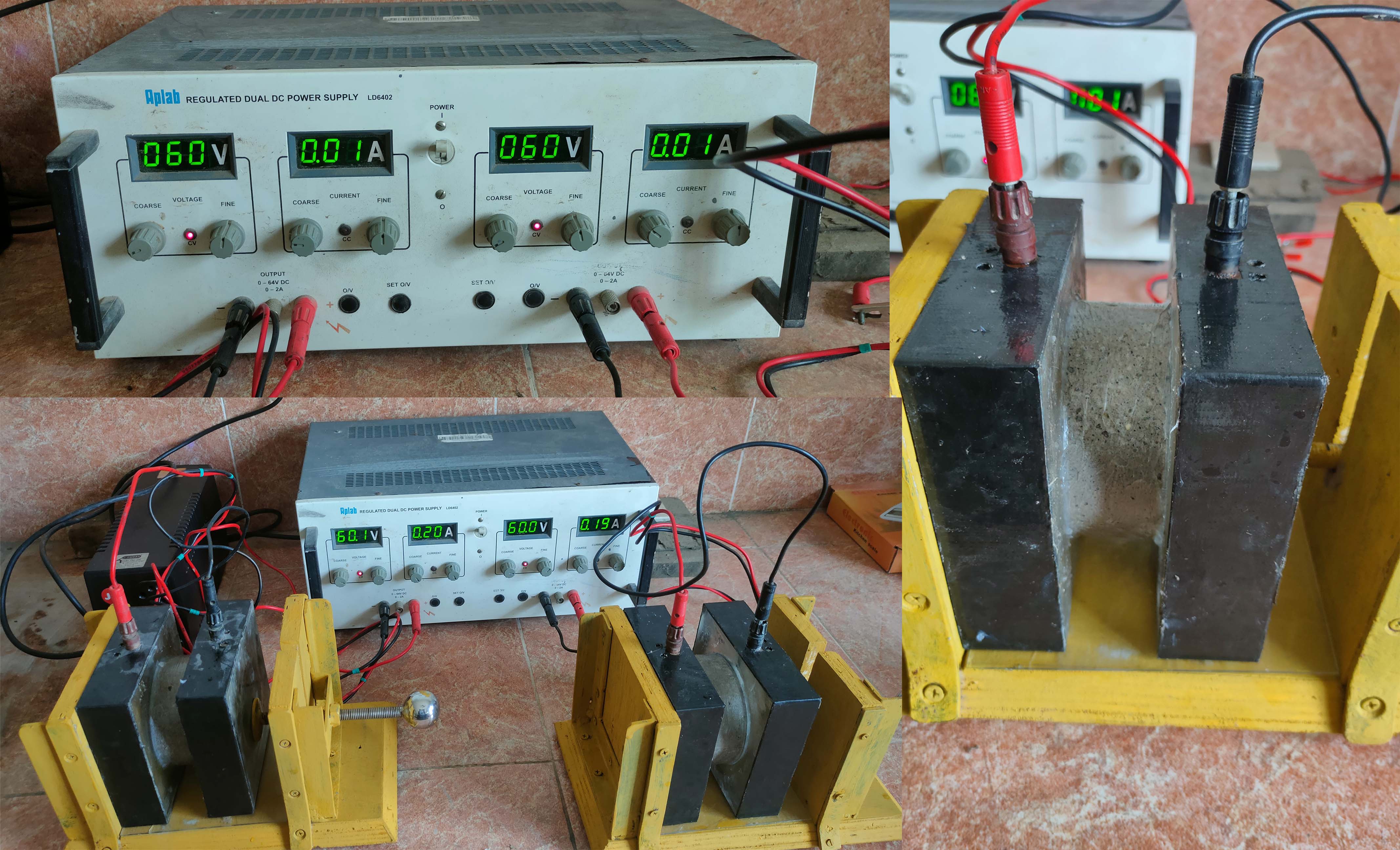 | |
| Make : 60V DC power supply and acrylic moulds as per ASTM 1202 | |
| Application : Chloride penetration of cement concrete, mortar, dense cementitious materials and ceramics. 60 V DC is applied across the specimen with 0.2 M NaOH solution filled in the positive end and 2% NaCl in the negative side. The current passed is measured at 30 minutes intervals of time for a duration of 6 hours and the total charge passed is used to calculate the chloride permeability of the material. | |
| Standard Features:
(i) Rapid measurement of chloride permeability in 6 hours. (ii) Capable of measuring RCPT of 2 specimens simultaneously (iii) Chemically resistant acrylic mould fitted with copper mesh (iv) Knobs for fine and coarse adjustment of applied voltage and current (v) Easy connection through banana pins and provision for connecting additional ammeter for better precision (vi) Wooden frame for holding the frame intact throughout the experiment and enables easy installation and dismantling. | |
| 2. Ultrasonic Pulse Velocity (UPV) Test | |
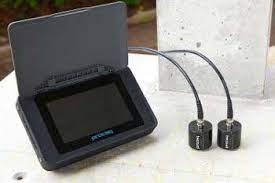 | |
| Make : Proceq Pundit PL-200 equipped with 50kHz transducers | |
| Application : The pulse velocity in a material depends on its density and its elastic properties. These in turn are related to the quality and the strength of the material. Pulse velocity can be measured for concrete, stone and ceramic materials. Used for testing the homogeneity of a material. Used for detecting cracks and voids. Measurement of crack depth through in line measurements. Measurement of strength and modulus of the material. Determination of thickness knowing the pulse velocity values of the material. | |
| Standard Features:
(i) Equipped with 50kHz transducer to measure UPV, compressive strength, crack width of different cementitious, stone and ceramic materials (ii) Measuring range of 0.1-7930 µs (iii) Housing and in-built rechargeable battery with a backup more than 8 hours for in-situ applications. (iv) Time based data logging for short term monitoring (vi) On board storage of 8gb for storing 100000 A scans and review of waveforms (vii) Touchscreen interface with high resolution colour display for best possible analysis | |
| 3. Tests on cement | |
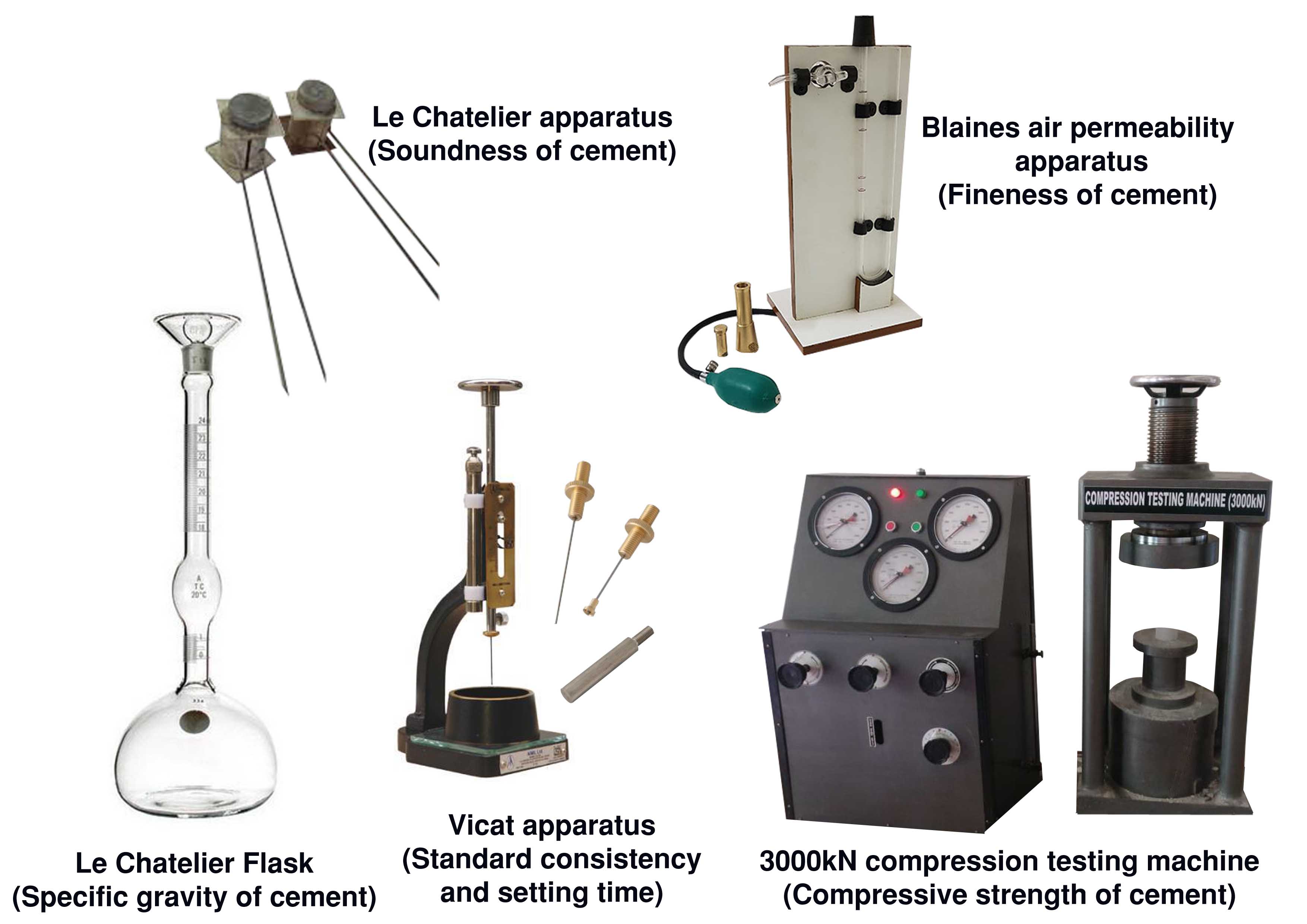 | |
| Make :Fineness by Blaine’s Air Permeability apparatus, Soundness by Le Chatelier method, Standard consistency, Setting time, Specific gravity and Compressive strength as per IS 4031 | |
| Application : “(i) Blaine’s air permeability apparatus conforming to IS 5516 is used to determine the fineness of cement in terms of specific surface area. Fineness test is used to check the proper grinding of cement and measures the surface area of the cement particles per unit mass. (ii) Le Chatelier apparatus conforming to IS 5514 is used to determine the soundness of cement due to the presence of lime. The test procedure consists of subjecting a sample of cement to a controlled heating, then measure its expansion for estimate the possible risk of late expansion due to hydration of free lime. (iii) Vicat apparatus conforming to IS 5513 is used to measure the standard consistency and setting time of cement. Standard consistency test is conducted to find out the amount of water to be added to the cement to get a paste of normal consistency. Initial setting time is the time elapsed between the moments that the water is added to the cement, to the time that the paste starts losing its plasticity. The final setting time is the time elapsed between the moment water is added to the cement and the time when the paste has completely lost its plasticity and has attained sufficient firmness to resist certain definite pressure. (iv) Le Chatelier flask is used to determine the specific gravity of cement. Specific gravity is the comparison of the mass or density of any substance with the mass or density of the standard substance (water). Specific gravity of cement is an essential parameter in concrete mix design and quantity estimations. (v) Compressive strength of cement is estimated by conducting compression test on standard mortar cube of face area 50 sq.cm. after 7 and 28 days of curing. Compression testing machine of capacity 3000kN is used to carry out the compression test. ” | |
| 4. Digital Schmidt Rebound Hammer | |
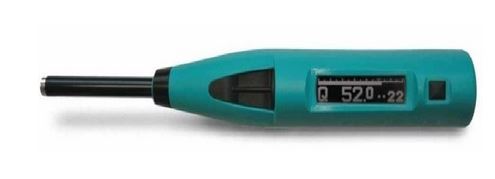 | |
| Make :Proceq – ST Type N conforming to IS 13111 | |
| Application : Rebound hammer is used to measure the compressive strength of concrete directly by surface impact. It can be used for both laboratory and in-situ applications. The rebound energy is measured to calculate the compressive strength. The equipment is capable of measuring compressive strength of any concrete surface flat, inclined or vertical. | |
